Damage Prevention Guidance for Municipal Operations and Maintenance Activities
Damage Prevention Guidance for Municipal Operations and Maintenance Activities [PDF 1795 KB]
Copyright/Permission to Reproduce
 Table of contents
Table of contents
- Introduction
- Operations and Maintenance Activities
- Damage Prevention (DP) Safety Assessment
- O&M activities that do not need consent from the pipeline company
- Prescribed area
- Ground Disturbance
- Facility
- Structures
- What if the work plans change?
- Vehicle Crossings
- Agreeing to activities and costs
- Damage Prevention Guidance for Municipal Operations and Maintenance Activities Table
- For more information
Introduction
Damage Prevention Guidance for Municipal Operations and Maintenance Activities
Damage prevention is a shared responsibility, and we all have a role to play.
This guidance is for pipeline companies, public works crews, contractors, and local governments doing routine municipal operations and maintenance activities involving construction, ground disturbance or vehicle crossings near Canada Energy Regulator (CER) regulated pipelines.
Whether you maintain the roads and underground services or manage construction- related activities for your local government, involve the pipeline company early in the planning phase of your project by contacting your provincial One Call centre to request a “planning” locate. With effective planning, companies can work with you to avoid possible conflicts.
Contact of any kind with a pipeline can have severe consequences ranging from service disruptions to environmental damage or personal injury. Any resulting delays can also have a financial impact, directly affecting your ability to operate efficiently and provide important services to your local community.
If municipal staff or contractors are unsure whether the pipeline company is to be notified, always opt for increased communication and contact the one-call centre at Click Before You Dig to place a locate request.
Where guidance conflicts with the Canadian Energy Regulator Act (CER Act) or Damage Prevention Regulations – Authorizations (DPR–A), and / or Damage Prevention Regulations – Obligations of Pipeline Companies, or any Order made under the CER Act or Regulations, the CER Act, Regulations or Order shall prevail.
The Canadian Common Ground Alliance (CCGA) Underground Infrastructure Damage Prevention Best Practices manual has additional important information on the ground disturbance process from planning and design to the completion of a project, and can be downloaded at no charge from the CCGA website.
Please see the CER Damage Prevention pages for more information on working safely near pipelines and for our other publications such as Construction Near Pipelines or Pipeline Damage Prevention Regulations – What you need to know and for access to the CER Pipeline Damage Prevention Regulations.
Operations and Maintenance Activities
In accordance with Damage Prevention Regulations – Authorizations section 11, pipeline company consent is not required for the maintenance of an existing facility.
However, if the activity is in the prescribed area (see below) and involves a ground disturbance, a locate request must be made at least three days in advance. If performing mechanical excavation within three metres of the pipe, municipal staff must follow the requirements outlined in section 10(3)(c) to (h) of the Damage Prevention Regulations – Authorizations. (See for more information).
If any interference with or alteration of a CER regulated pipe becomes necessary, municipal staff must get written consent from the pipeline company.
Good To Know...
The installation or construction of any new infrastructure involving ground disturbance in the prescribed area requires you to obtain consent from the pipeline company, and the pipeline company is required to provide you with the information to work near their pipeline safely. This may require pipeline company oversight when working near the pipe.
Pipeline companies can only deny consent for safety reasons. If you cannot obtain consent from the pipeline company, or if the conditions for consent are overly burdensome, you can apply to the CER to help reach an agreement.
Any time you are working within the prescribed area, it is recommended to contact the local one-call centre to place a locate request to find out what infrastructure is buried in the work area and if there are any measures needed to ensure the safety of your crew and the public.
Damage Prevention (DP) Safety Assessment
In this publication, the term “DP Safety Assessment” is used to describe the actions undertaken by the pipeline company to determine the potential impact of the ground disturbance activity, construction of a facility or vehicle crossing, on the pipe.
Such actions can include, but are not limited to:
- Determining the proximity of the activity or construction to the pipe
- Performing a pipe locate, and marking the pipe
- Undertaking a detailed review and assessment to determine if the activity may pose a hazard to the pipe
- Providing conditions or measures in writing to the party undertaking the activity to ensure the safety of people, environment and the pipe
The information resulting from the DP Safety Assessment must be provided in writing to the party undertaking the activity as per DPR–O s.6. It may be a document (electronic or hard copy) stating that the activity as described is not in conflict with the pipe and is clear to proceed or may be a locate form or pipeline crossing agreement with conditions for undertaking the activity safely, or it may be a detailed review and assessment. The activity must not proceed without this document confirming that it can proceed safely.

O&M activities that do not need consent from the pipeline company
 Some activities do not require consent. These activities do not disturb the ground, or do not go 30 cm (12 in) or deeper into the ground. Maintenance work that does not disturb the ground 30 cm (12 in) or deeper does not need consent.
Some activities do not require consent. These activities do not disturb the ground, or do not go 30 cm (12 in) or deeper into the ground. Maintenance work that does not disturb the ground 30 cm (12 in) or deeper does not need consent.
This maintenance work includes:
- adjusting valves, valve boxes, manholes
- sidewalk panel replacement, curb removal
- saw-cut less than 30 cm (12 in) deep
- road-milling and patching less than 30 cm (12 in) deep (large or small project)
- planting less than 30 cm (12 in) deep
- signposts less than 30 cm (12 in) deep
You must inform contractors working for you about their responsibilities under the regulations. When municipalities and developers have projects that are within the prescribed area of a federally regulated pipeline, the request for bids and the contracts should advise that there is a federally regulated pipeline in the work area and that all work must be done in accordance with the DPR–Authorizations.
Prescribed area
The prescribed area is a requirement in regulations prescribing an area for the purposes of safety and security. This area requires extra precaution, communication, and consent from the pipeline company for some activities.
It is measured 30 m outward on both sides from the centreline of the pipe. If there is more than one pipeline in the right-of-way, the prescribed area is measured from the outermost pipelines on each side.
Activities and equipment in the prescribed area are regulated for safety, and to prevent contact with and damage to the pipe.

Working within the prescribed area
The pipeline company has to make sure that the activities won’t damage the pipe and give you the information to do your activities safely. You need this information for your own safety, and the safety of the public and the environment.
Before starting any projects or work within the prescribed area, you must get a DP Safety Assessment and written consent from the pipeline company is required for any activity involving:
- digging 30 cm (12 in) or deeper
- building a facility such as a playground near the pipeline
- erecting event tents or signage near the pipe
- building fences and digging fence posts (snow fences too!)
- driving vehicles and construction equipment across a pipeline off of a public roadway
Ground Disturbance
 Ground disturbance is defined as any activity within the prescribed area that involves:
Ground disturbance is defined as any activity within the prescribed area that involves:
- any activity that digs 30 cm or deeper within the prescribed area
- cultivation to a depth of 45 cm or deeper
- any activity that permanently results in the reduction of the earth cover over the pipeline
It may not be possible to determine the original depth of earth cover provided at the time the pipeline was constructed. For guidance purposes, if the activity results in the reduction of the current depth of earth cover over the pipeline, it is a ground disturbance.
If the activity involves ground disturbance, the regulations require contacting the one-call centre to request a locate.
Controls
Municipal staff and their contractors should consider putting controls in place in situations where they are required to use stakes or pins, such as marking the 30 cm point on the stake or pin to visually confirm that it is not driven into the ground 30 cm or deeper. An example of where stakes or pins are used is the placement of building forms for concrete sidewalk replacements.
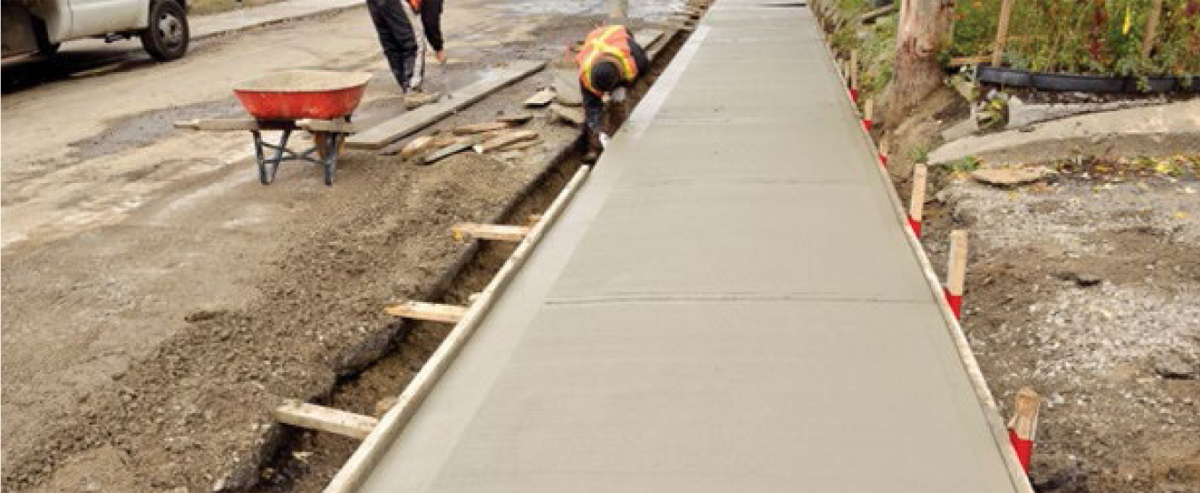
Stakes for concrete forms with marks at 29 cm
Facility
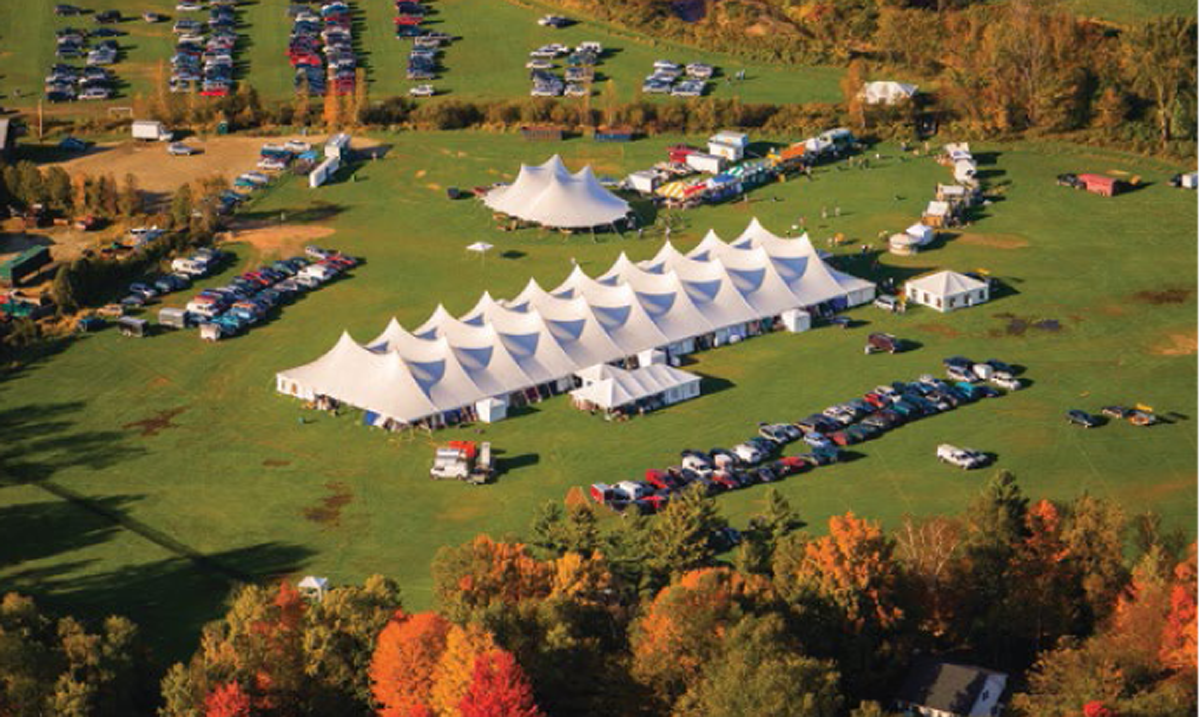 When constructing a facility, if you are digging or driving stakes 30 cm (12 in) or deeper into the ground in the prescribed area, you must get the pipeline company’s consent.
When constructing a facility, if you are digging or driving stakes 30 cm (12 in) or deeper into the ground in the prescribed area, you must get the pipeline company’s consent.
In the regulations, a facility can be:
- structures (more examples are in Structures)
- fences
- highway, private road, or railway
- irrigation ditch, drain, or drainage system
- sewer
- dike
- telephone line, telegraph line, telecommunication line
- line for the transmission of electricity
- a pipe for the transmission of hydrocarbons or any other substance
Structures
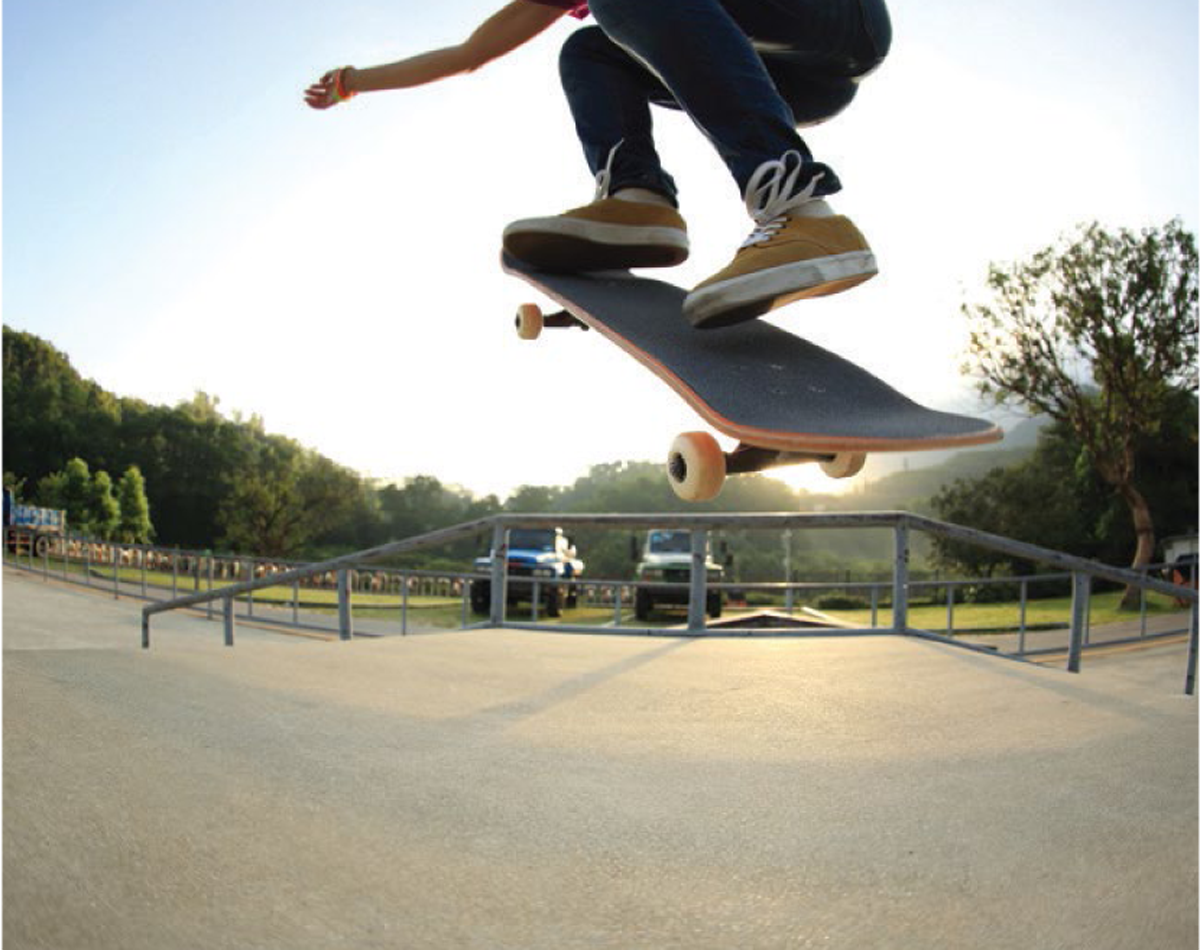 Some examples of structures include:
Some examples of structures include:
- fences
- outbuildings
- skating rinks, skateboard parks
- swimming pools
- sheds
- gazebos
- event tents
- woodpiles
- berms
- any other structure
- placing or storing equipment
(mobile or otherwise)
What if the work plans change?
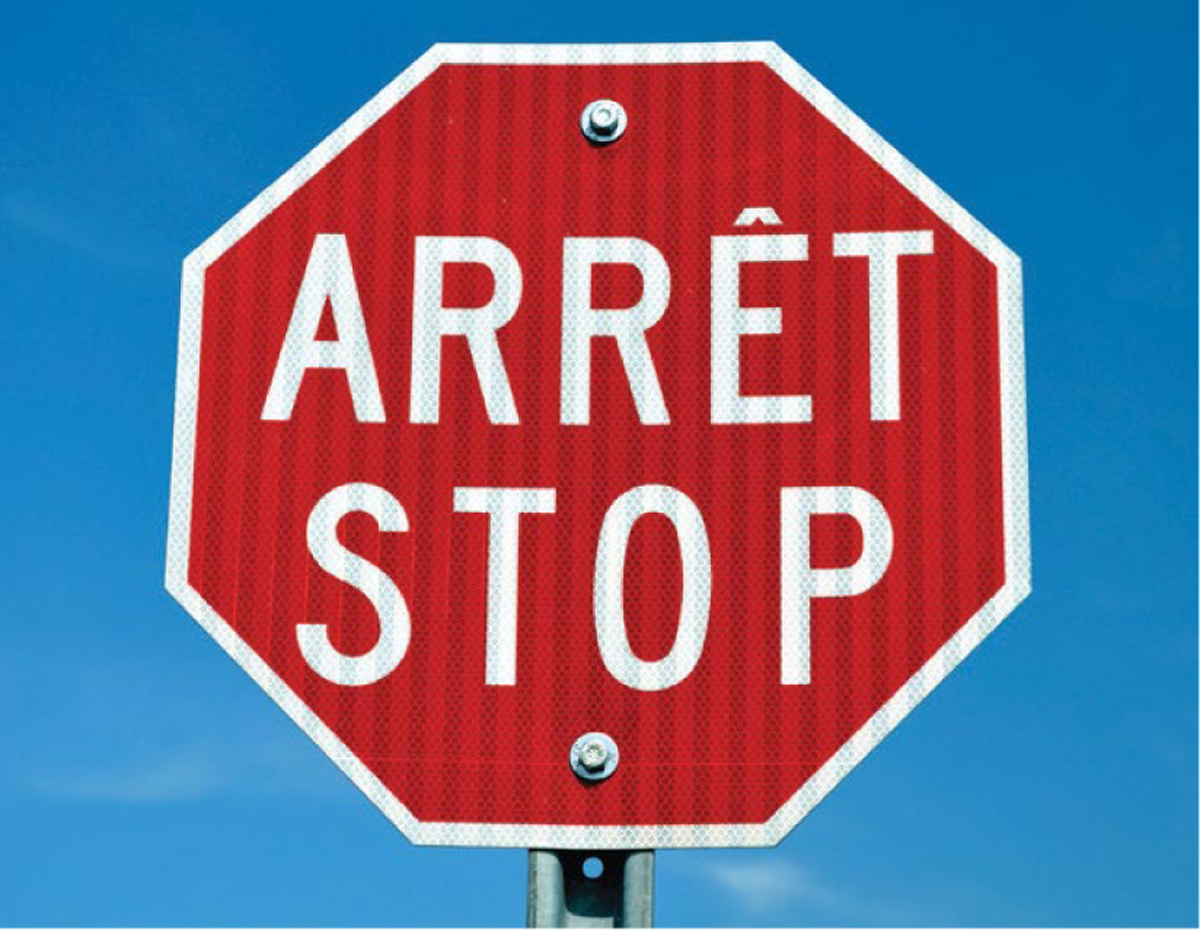 The job originally was supposed to be less than 29 cm deep, but conditions at the site now mean that you have to go deeper: what now?
The job originally was supposed to be less than 29 cm deep, but conditions at the site now mean that you have to go deeper: what now?
If you need to dig 30 cm (12 in) or deeper, or if your projects or work bring you closer to the pipeline, this is called scope change.
If the scope of an activity near a pipeline changes from being less than 30 cm deep to 30 cm deep or greater, work must stop and the pipeline company must be contacted to perform a damage prevention (DP) safety assessment, which may include a locate, for the activity.
Vehicle Crossings
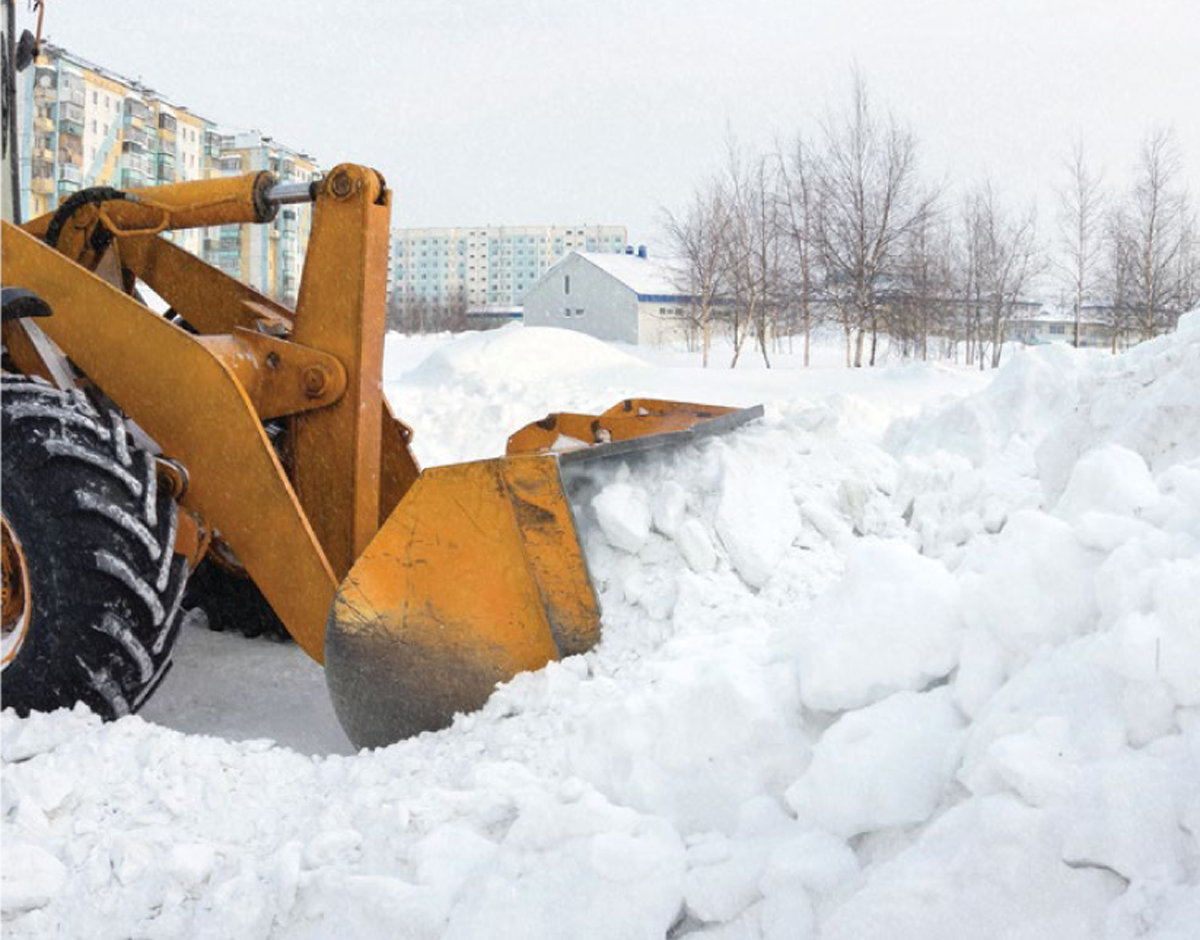 Moving vehicles or mobile equipment over a pipeline can increase the stresses on the pipe and cause rutting, which could damage the pipe. Driving with narrow tires or old equipment, especially in damp conditions, may cause ruts. These can reduce cover over the pipe, and tires may damage pipe coating.
Moving vehicles or mobile equipment over a pipeline can increase the stresses on the pipe and cause rutting, which could damage the pipe. Driving with narrow tires or old equipment, especially in damp conditions, may cause ruts. These can reduce cover over the pipe, and tires may damage pipe coating.
The factors that must be considered include: depth of cover above the pipe; soil type; ground conditions; pipe composition; creation of pressures on the pipe by static and dynamic loads, and operating stresses experienced by the pipe. This information can only come from the pipeline company.
Prior to driving municipal vehicles across a pipeline in a location that is off of a public highway or road, municipal staff must contact the pipeline company to provide a list of vehicle classes and associated axle weights of the vehicles that are planned to be used to cross the pipeline. The pipeline company will use that information to develop a vehicle management plan for municipal vehicles crossing the pipeline. The vehicle management plan should be reviewed by municipal and pipeline company staff on a regular basis. Where there are frequent crossings, the municipality and the pipeline company could consider long term vehicle pathways.
If soil conditions are such that the vehicle could leave ruts, municipal staff and contractors should consider different approaches to accessing the job site. Rutting of 30 cm or greater constitutes a ground disturbance and could impact the personal safety of staff or damage the pipe or its coating. Municipal staff must contact the pipeline company for a DP safety assessment if these soil conditions exist.
Agreeing to activities and costs
The CER encourages you and the pipeline company to reach an agreement regarding activities within the prescribed area, or for crossing a pipeline. The pipeline company must give written consent for certain activities within the prescribed area. If costs result from authorized projects or work, both you and the pipeline company should agree on how to address those costs.
If you and the pipeline company cannot reach an agreement on costs or terms of work, you can both seek help from the CER.
We offer 2 options to help you:
- Using Alternative Dispute Resolution to negotiate an agreement
- Filing a Section 335 application to address:
- ground disturbance and associated cost apportionment
- facility construction and associated cost apportionment
- vehicle or mobile equipment crossings near federally regulated pipelines

Damage Prevention Guidance for Municipal Operations and Maintenance Activities Table
Activity |
Applicable Regulatory CategoryTable Note a |
Regulatory Guidance |
FactorsTable Note b (1-6) |
Action Required by Municipality |
Action Required by Pipeline Company |
||||
|---|---|---|---|---|---|---|---|---|---|
Activity |
Construction |
Ground Disturbance DPR–A s.10 |
Ground Disturbance Facility Maintenance DPR–A s.11 |
Vehicle Crossing DPR–A s.12 |
Use of Vehicles & Equipment CER Act s.112(2)(b) |
||||
Maintenance activities < 30 cm deep,such as: Adjusting valves, valve boxes, manholes Sidewalk panel replacement, curb removal Saw-cut < 30 cm Road- milling and patching < 30 cm (large or small project) Planting < 30 cm Sign posts < 30 cm deep |
No |
No |
No |
No |
No |
Authorized under the CER Act |
NA |
Notify contractors of their responsibilities under the DPR–A. If ground disturbance will be 30 cm or greater, must contact the one-callcentre at least 3 days before the activity. |
Acknowledge the one-call centre contact. Expedite DP safety assessment and the locate (if required) if work unexpectedly becomes a ground disturbances. |
Underground infrastructure maintenance activities and installation > 30 cm deep such as: Streetlight base replacement, replacement and repair of water / sewer infrastructure > 30 cm deep Saw-cut > 30 cm Road-milling and patching > 30 cm |
No |
Yes |
Yes |
No |
No |
DP safety assessment from the pipeline company required. (DPR–A s.11) |
Cut – 1, 2 Mill – 1,2,3 |
Contact the one-call center at least 3 days before the activity. |
Respond with a DP safety assessment and, if required, a locate within 3 business days. Provide the written information resulting from the DP safety assessment i.e., locate form, safety measures and conditions, “no conflict” or “all clear” etc. (DPR–A s.11) |
Filling pothole < 30 cm |
No |
No |
No |
No |
No |
Authorized under the CER Act |
NA |
NA |
NA |
Vehicle Crossing off public highway or road, non- agriculture (e.g. grass cutting ditches, paths or trails over pipeline) |
No |
No |
No |
Yes |
No |
DP safety assessment with written consent from the pipeline company required. (DPR–A s.12) |
3 – 6 |
Provide list of vehicle classes and associated axle weights planned to be used to cross the pipeline. Inform staff that if soil conditions are such that the vehicle could leave ruts to consider different approaches to accessing the job site. Rutting >30 cm constitutes a ground disturbance and could impact the personal safety of staff. Municipal staff must contact the pipeline company if these conditions exist. |
Develop and provide a vehicle management plan to determine what vehicle classes, types and weights require authorization. Take-away for the future – Consider long-term vehicle paths to be built to accommodate a vehicle in frequently accessed areas. |
Street tree planting (Hand dug or tree spade) NOTE: Not considered to be infrastructure or the construction of a facility |
No |
Yes |
No |
Depends |
Depends |
DP safety assessment with written consent from the pipeline company required; very unlikely that a tree is planted at less than 30 cm depth. Tree spade vehicle may be ‘crossing’ pipeline if it leaves public road. |
1-6 |
Contact the one-call centre at least 3 days before the activity. |
Respond with a DP safety assessment and, if required, a locate within 3 business days. Provide the written information resulting from the DP safety assessment i.e., locate form, safety measures and conditions, “no conflict” or “all clear” etc. (DPR–A s.11) |
Ditch cleaning (any depth) with mechanical equipment |
No |
Depends |
Depends |
Depends |
Depends |
DP safety assessment with written consent from the pipeline company required. May not necessarily result in a ground disturbance, but for safety considerations, a precautionary approach is used. |
1 – 6 |
Contact the one-call centre at least 3 days before the activity |
Respond with a DP safety assessment and, if required, a locate within 3 business days. Provide the written information resulting from the DP safety assessment i.e., locate form, safety measures and conditions, “no conflict” or “all clear” etc. |
Culvert / catch basin / sewer cleaning or sediment removal |
No |
No |
No |
No |
No |
Authorized under the CER Act |
NA |
NA |
NA |
Re-install or replace existing sign > 30 cm |
No |
Yes |
Depends |
Depends |
Depends |
DP safety assessment required with written consent from the pipeline company required; hand-digging will usually be required unless post-hole is perfectly preserved. Sign installation vehicle may be ‘crossing’ pipeline if it leaves public highway or road. |
1 – 6 |
Routine replacement: Contact the one-call centre at least 3 days before the activity. If the sign has been knocked down and needs an immediate emergency replacement for public safety, place an emergency locate request to expedite the process. Crew(s) must be onsite. |
a) Respond with a DP safety assessment and, if required, a locate within 3 business days. (b) Emergency locate response (a) & (b) Provide the written information resulting from the DP safety assessment i.e., locate form, safety measures and conditions, “no conflict”or “all clear” etc. |
Safety-critical sign re-install or replace > 30 cm (e.g. stop sign) |
No |
Yes |
Depends |
Depends |
Depends |
DP safety assessment with written consent from the pipeline company required and DPR–A s.3(3) “Emergency” process is triggered. DP safety assessment with written consent from the pipeline company required; hand-digging will usually be required unless post-hole is perfectly preserved. |
1-3,5,6 |
Call the one-call centre ASAP before activity and place an Emergency locate request. NOTE: Emergency locate requests must be phoned in to the one-call centre. The phone number can be found on the home page of your provincial one-call centre’s website which can be accessed through Click Before You Dig |
Respond with a DP safety assessment and, if required, a locate ASAP Provide the written information resulting from the DP safety assessment i.e., locate form, safety measures and conditions, “no conflict” or “all clear” etc. (DPR–A s.11) |
Street light wiring – Pulling wirethrough pre-existing conduit |
No |
No |
No |
No |
No |
Authorized under the CER Act |
NA |
NA |
NA |
Grading gravel roads / shoulders |
No |
No |
No |
No |
No |
Authorized under the CER Act |
2,3,6 |
NA |
NA |
For more information
Measures
- 10(3) Any person that is engaged in an activity that causes a ground disturbance within the prescribed area must comply with the following measures:
- (c) not undertake mechanical excavation that would cause a ground disturbance within the prescribed area within 3 m of a pipe, unless
- (i) if the excavation runs parallel to the pipe, the pipe has been exposed by hand at sufficient intervals to confirm the pipe’s location or the pipeline company has used a method that would permit it to confirm the pipe’s exact location and has informed the person of that location,
- (ii) if the excavation crosses the pipe, the pipe has been exposed by hand at the point of crossing or the pipeline company has used a method that would permit it to confirm the pipe’s exact location, has informed the person of that location and has confirmed that the pipe is at least 60 cm deeper than the proposed excavation, and
- (iii) if ground conditions render it impractical to locate the pipe using any of the methods set out in subparagraphs (i) and (ii), the pipeline company directly supervises any excavation;
- (d) comply with the instructions of the pipeline company’s authorized field representative regarding the procedures that are to be followed during the activity and that relate to the pipeline’s safety and security;
- (e) if interference with or alteration of a pipe becomes necessary, obtain the pipeline company’s written consent to interfere with or alter the pipe;
- (f) carry out any activity that involves the interference with or alteration of a pipe under the pipeline company’s supervision;
- (g) immediately notify the pipeline company of any contact with a pipe or its coating during the activity; and
- (h) unless otherwise agreed on by the pipeline company and the person that is engaged in the activity, notify the pipeline company at least 24 hours before backfilling over a pipe.
- (c) not undertake mechanical excavation that would cause a ground disturbance within the prescribed area within 3 m of a pipe, unless
Damage Prevention Regulations
To read the complete CER Damage Prevention Regulations, see:
DPR–Authorizations
Canadian Energy Regulator Pipeline Damage Prevention Regulations – Authorizations
And DPR–Obligations
Canadian Energy Regulator Pipeline Damage Prevention Regulations – Obligations of Pipeline Companies

For more information on damage prevention visit: Damage Prevention
Find out more about the Canada Energy Regulator by visiting our website.
Be sure to follow us on social media for the latest updates.Follow:
For copies of any CER publication or for more information, contact us:
ONLINE: website
EMAIL: publications@cer-rec.gc.ca
TOLL FREE: 1-800-899-1265
Write us or visit our library at:
Canada Energy Regulator
210-517 10 Ave SW
Calgary AB T2R 0A8
© His Majesty the King in Right of Canada as represented by the Canada Energy Regulator 2023



- Date modified:
